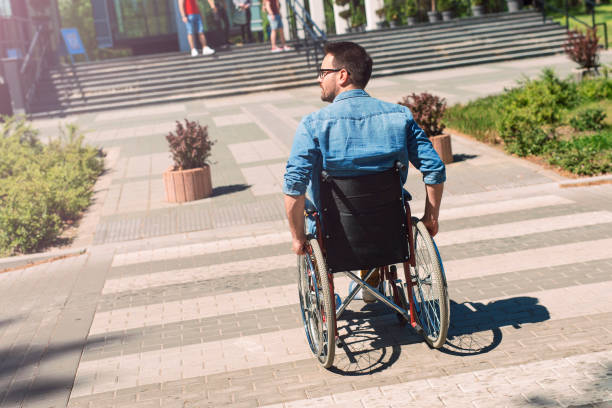Paralysed man walks again via thought-controlled implants

Researchers said that a paralyzed man was able to walk for the first time using his thoughts after two implants restored communication between the brain and the spinal cord. Gert-Jan (who did not wish to disclose his name) said that the breakthrough gave him “a freedom I never had” before.
A bicycle accident left the 40-year-old Dutchman paralyzed for over a decade. According to a Nature study, he is now able to walk “naturally,” tackle difficult terrain and climb stairs using the new system.
A team of researchers from France and Switzerland has been working on this technological breakthrough for more than ten years. The team demonstrated last year that a spinal implant, which uses electrical pulses in order to stimulate leg muscles to move again, had enabled three paralyzed individuals to walk. They had to press a switch to move their legs every time. Gert-Jan said that this made it hard to take a “natural” step.
Digital bridge
The latest Research combines a spinal implant with a new technology known as a brain-computer Interface, which is implanted over the part of the brain that controls leg movements. Researchers said that the interface decodes brain recordings using artificial intelligence algorithms. Researchers at France’s Atomic Energy Commission, CEA, designed the interface. It can then work out the direction in which the user wants to move their legs at any given moment.
The portable device, which can be carried in a backpack or walker, transmits the data to the spinal implant. This allows them to move around independently without assistance. The researchers describe the two implants as a “digital link” that bridges the gap between the brain and spinal cord created by Gert-Jan’s accident. Gert-Jan explained, “I can now do whatever I want. The stimulation kicks in immediately when I think of it.
He said that after undergoing two invasive surgeries to implant the devices, “it has been a long road to get here,” at a press event in Lausanne, Switzerland. He can now stand with friends at a bar and drink a beer, among other things. In a press release, he stated that “this simple pleasure represents an important change in my lifestyle.”
Radically Different
Gregoire Courtine is a neuroscientist and co-author of the study at Switzerland’s Ecole Polytechnique Federale de Lausanne. He said that it was “radically” different from previous achievements. He noted that previous patients had to exert a great deal of energy to walk. Now, one only needs to think of walking in order to take a single step.
Gert-Jan also showed a positive outcome: after six months of intensive training, he regained some motor and sensory skills that he lost during the accident. When the “digital-bridge” was switched off, he was able to use crutches and walk.
Guillaume Charvet of France’s CEA told AFP that this indicates “that the establishment of a link between brain and spinal cord would promote a reorganization of neuronal networks at the site injury.” When will this technology be made available to people with paralysis around the globe? Charvet warned that it would take “many years” of Research to reach this point. The team is preparing to test the technology in order to see if it can restore the function of arms and hands. The team hopes that it can also be used to treat other conditions, such as stroke-induced paralysis.



Leave a Reply